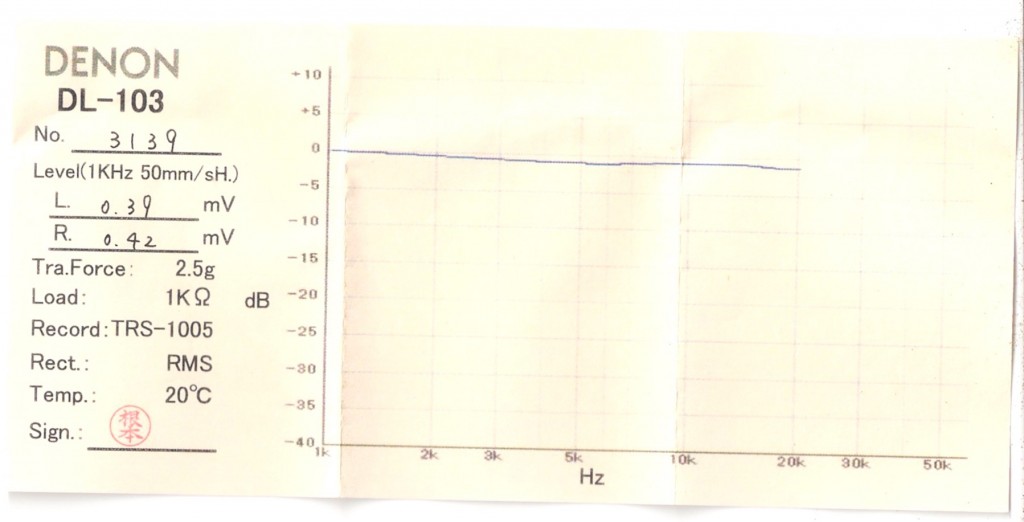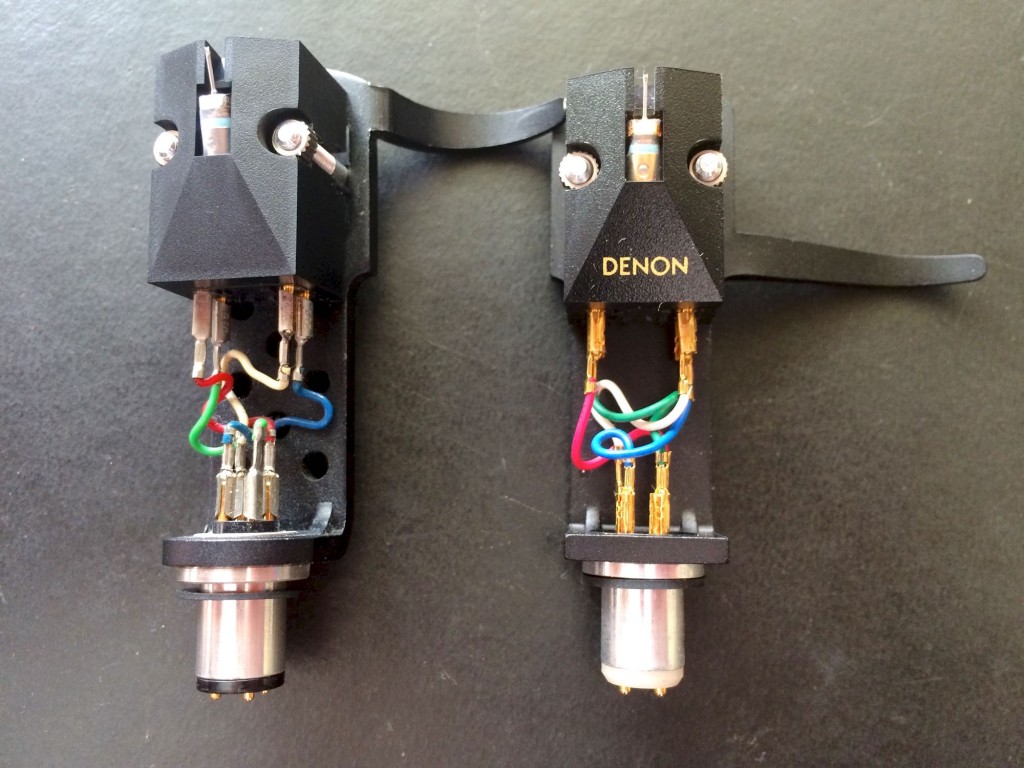The famous Denon DL 103 low output moving coil (LOMC) phono cartridge was originally designed for professional broadcast use in 1962. Production has continued uninterrupted since then. That’s right, 53 years and counting.
Why?… It’s an amazing cartridge with unparalleled transient response. It’s a fussy player, very fussy. It demands proper tonearm compliance (i.e. high moving mass) and rated at just 0.39 mV output it’s also very demanding of even the best moving coil phono stages or regular ones coupled with step up transformers or pre-preamplifiers.
So how has this fussy cartridge, dedicated for the broadcast industry that has left it and all other phono cartridges far behind, survived and prospered all these years? “The proof is in the pudding” is a phrase that comes to mind. This exemplary moving coil phono cartridge was adopted by audiophiles very shortly after it’s release. It’s sort of like the Quad ESL loudspeaker when it first came out, immediate legendary status. Now, 53 years later, you can still purchase a Denon 103 for around $175 street price, making it the bargain of all time for phono cartridges, bar none. It even ships with an individually plotted frequency response curve and individually measured left and right channel output levels. When I visited Zu Audio in Ogden, Utah; a high end audio company doing modifications for the Denon 103, the owner said he’s been out of stock for months. When I inquired as to why, he replied, “I think the engineer doing the frequency response graphs got behind”. Ha, I love it!

Of course, you can add anywhere from $500 to $2k for quality step-up transformers to couple the Denon 103 with a regular moving magnet (MM) phono stage, or spend around $20k for a Pass Labs phono stage that will handle the low output of the Denon 103 with aplomb, but this legendary phono cartridge won’t seem like such a bargain anymore. Especially considering that modern turntables with tonearms capable of handling the compliance requirements of the Denon 103 start at around $5k and quickly escalate to $30k.
So how can a budget audiophile bask in all the goodness the Denon 103 has to offer?… Vintage gear. You can purchase a Nelson Pass moving coil phono stage dressed up as a Nakamichi preamplifier for around $500 (How to get a moving coil phono stage for free) and vintage Denon direct drive turntables complete with low-compliance tonearms capable of handling the 103 also start around $500 (Denon DP-790W turntable review). Of course, you need to know your vintage gear and assess for bulging capacitors, fried resistors, blown transistors, etc (The vintage “crap shoot”).

So all that said, let’s go back to the original topic, the Denon 103 vs. the Denon 103R. With a street price of around $275, the 103R was a “no brainer” when shopping for my vinyl-oriented Maui system and I definitely wanted to give it a try – I had never heard it before since it was released in 1994. It is marketed as a “6N” cartridge. Why?… Because the copper in its moving coils is rated with a purity of 99.9999%. Too funny.
The bottom line is the 103R has even lower moving mass (It’s all about reducing mass for the transducers) than the 103 and a correspondingly lower output voltage of around .25mV vs around .39mV for the original 103 (remember, these are individually tested and measured for every hand-made Denon 103 leaving the factory in Japan). Plus the 103R has some nice gold lettering on it, dressing it up nicely, but the cartridge body remains identical to the original 103.
When it came time to purchase a phono cartridge for my digitally-oriented Canada system, I figured why not get an original 103 and listen and compare it to the 103R on my Maui system prior to bringing it north of the border. Everything is less expensive in the USA vs. Canada anyway, but that’s another topic.
So into the tonearm of my Denon direct drive TT my new 103 went, temporarily replacing my beloved 103R. I promised myself to give the 103 at least 50 hours of break-in prior to any evaluations, and even left it in the run-out groove of some albums to loosen it up. But, that proved completely unnecessary. I found myself sitting down and enjoying the 103 immediately. Whenever I dropped the needle I wanted to jump into the listening chair and enJoy. Even at low levels, this cartridge sings. Even more so for it’s higher output levels. Let’s face facts, signal-to-noise ratios are going to improve as output levels in the coils increase, that’s just common sense. Any pre-preamplifier or step-up-transformer has the opportunity to add noise, and the greater the amplification of that device, the more noise.
After listening to the original Denon 103 LOMC for a couple weeks, I don’t feel compelled to replace it with the 103R… at all. Maybe if I did blind A/B testing and I really tried to hear a difference, I could. Or, maybe not. I kind of feel like if I need to go to those lengths than what’s the point? I’d be loosing the forest through the trees and no longer just loving the music I’m listening to (Losing the forest through the trees?…).
Don’t get me wrong, I’m not “dissing” Denon at all here. If anything, I applaud their efforts to improve on perfection. I fell in love with their 103 LOMC cartridge in the late 70s, playing it with in a Decca tonearm on a Techniques SP-10 MkII deck into Magnepan Tympani 1D planar loudspeakers. And now, 37 years later I’m still in love with it. Either the 103 or the 103R can follow the grooves on my vinyl any day, all day. They are both “giant slayers” in my book. And, corrected for inflation, they both sell for far less than when they were originally released.

